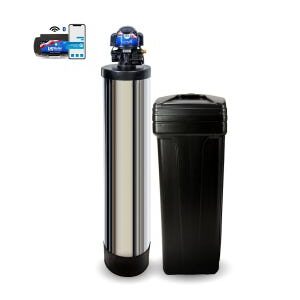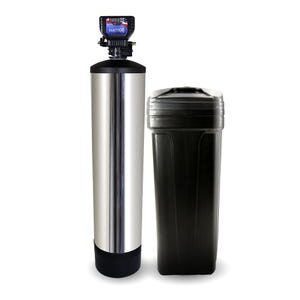Why H2O Purified Water?
Lower your energy bills, spend less time cleaning, and prevent future problems with your plumbing system and appliances with a water softener. Enjoy the luxury of preserving your natural oils, leaving your skin and hair silky smooth.
Contamination of drinking water supplies can occur in the source water as well as in the distribution system after water treatment has already occurred
Sources of drinking water are subject to contamination and require appropriate treatment to remove disease-causing contaminants.
The presence of contaminants in water can hardness to adverse health effects, including gastrointestinal illness, reproductive problems, and neurological disorders.
The presence of contaminants in water can hardness to adverse health effects, including gastrointestinal illness, reproductive problems, and neurological disorders. Infants, young children, pregnant women, the elderly, and people whose immune systems are compromised because of AIDS, chemotherapy, or transplant medications, may be especially susceptible to illness from some contaminants
You should test your water at least once per year for bacteria and nitrate.Tests for bacteria are often called “coliform”, “fecal coliform”, or “total coliform”. … While some coliform bacteria themselves may not cause disease, they can warn you of the presence of more harmful bacteria
Microorganisms in Water
There are a range of microorganisms, including bacteria, protozoa, and viruses, that live and thrive in water. While most people in the United States get their water from a municipal water treatment plant where the water has been disinfected to kill any biological contaminants, private water sources – such as wells – can become contaminated. If you suspect that your water supply, no matter the source, may be contaminated, it’s extremely important to have it tested and treated right away. There are many different types of microorganisms in water and may make you very, very sick. One of the most common tests measures the level of coliform in water, which is a strong indicator that the water may be contaminated with other pathogens.
Symptoms: Many waterborne pathogens cause gastrointestinal illness with flu-like symptoms, especially in young people, those with compromised immune systems, or the elderly. Bacteria in water are typically swallowed, which is why many of the disease symptoms start in the stomach or intestines.
Causes: There are a number of ways that disease-causing microorganisms can get into your water. Fecal coliform bacteria, including E. coli are found in high amounts in the intestines and feces of people and animals. Cryptosporidium and giardia protozoa often come from surface water contaminated with the feces of wild animals. These and other microorganisms often get into the water supply through the feces of humans and animals, including cattle and other farm animals, cats and dogs, and wildlife. This material can be washed into storm drains, streams, reservoirs, and other bodies of water, and then may travel into the water system. Leaky pipes and sewer connections, septic tanks that don’t work properly, an improperly sealed well, or problems at a water treatment plant can all allow these contaminants to get into your water supply and make you sick.
Health Concerns: Water that contains biological contaminants can be extremely dangerous. While many bacteria in water, such as E. coli, or protozoa like Cryptosporidium parvum, cause flu-like symptoms and gastrointestinal discomfort in otherwise healthy individuals, they can cause serious dehydration and even death in those who are very young, very old, or have compromised immune systems. Other far more serious illnesses can also be spread through contaminated water, including hepatitis, typhoid, dysentery, and cholera, all of which can result in severe illness or even death.
Action Level: Wells should be regularly tested for the presence of coliform in the water. Municipal systems are routinely tested for this bacteria as well. Drinking water should immediately be treated if the presence of any bacteria is detected.
HOW LONG WILL A CARBON TANK LAST BEFORE IT BECOMES EXHAUSTED?
The length of time between carbon exchange or rebedding is dependent upon the amount of chlorine/chloramines present in the source water. How often the carbon is changed is best determined by testing for chlorine/chloramine presence before each shift. Testing the carbon annually is recommended, to determine the life of carbon. Based on the test results a pattern can be identified and a routine established to change the tanks before they become exhausted. However, when a breakthrough occurs, the carbon is exhausted and needs to be replaced.
In addition to chlorine/chloramines, carbon will also remove organics from the incoming water, and is, therefore, a perfect medium for bacteria and proliferate. It can also become fouled by dirt and suspended particles, thus reducing the efficacy of the carbon. It is a common practice to backwash carbon to clear it of this matter and prevent channeling of the carbon bed so that the water is exposed to more surfaces, which renders the carbon more efficient. However, this does not renew the carbon; when it is exhausted it must be replaced.
Since bacteria growth is a problem in the carbon tanks, it is recommended that carbon exchange tanks be changed every 3 to 6 months even if they are not exhausted, or more often before they breakthrough.
HOW LONG WILL RO MEMBRANE ELEMENTS LAST?
A RO membrane, which has adequate pretreatment, which is cleaned and disinfected routinely, and is maintained well, will last on an average from 3-5 years in a large system, and 1-2 years in a portable system. Along with maintenance, the quality of the source water also determines the life span of the membrane element. A higher ionic concentrated source will have more wear on the membrane element than lower ionic supply water.
Thin-film (TF) membrane elements are more durable than cellulose acetate (CA) membrane elements. TF membrane elements have a longer life on a wider variety of feed water quality and have a greater range for pH tolerance than CA membrane elements do.
WHAT IS THE DIFFERENCE BETWEEN CLEANING AND DISINFECTION OF YOUR RO SYSTEM?
Cleaning is the removal of foulants from the feed side of the Reverse Osmosis (RO) membrane element. There are two types of cleaners, high pH (7.5 – 11) and low pH (2.0 – 4.0). High pH cleaners remove silt and organics that clog or foul the membrane element from functioning adequately. Cleaners aid in the control of microbes by stripping the membrane element free of deposits that bacteria can adhere to, but they themselves do not kill bacteria as disinfectant does.
Disinfection decreases and controls microbial levels in the complete system both feed and product side of the membrane and fluid pathway.
Routine cleaning of the membrane elements along with regular disinfection together in large central systems will expand the life of the RO membrane element and control bacteria counts in the system. It is recommended to disinfect a portable system if the system has not been in use for more than 8 hours. The membrane elements in portable ROs should be cleaned every quarter or more often as recommended.



